Getting content with your web content: practical tips for a great retail website (Part 2)
Whether you’re running a high-street shop, an online store or both, what are the ingredients that you need to create a really effective content website for your business?
In the previous part of this two-part blog, based on my recent seminar at Autumn Fair International, I explained what a content website was and set out the first seven of my 14 tips for getting content with your web content, covering the stages from planning to content writing. Here, in part two, I begin by looking at some of the ways in which you can make your site truly memorable for the right reasons by going beyond content that just sits there and stays the same.
Tip 8: Don’t rely on static content
There are lots of ways in which you can enliven your site and make it more interesting. For example, you might include a news and events section where you talk about offers, new products, or any awards that your business has won. You can also add interest through blogs, video, social media content and original images.
I’ll discuss each of those in more detail shortly, but the main benefit of including fresh, updated content like this is that it keeps both Google and your customers coming back to your site.
Tip 9: Blog about your passions
Blogging, clearly, is a subject particularly close to my heart. As you can see, mine has its own domain name – soultsretailview.co.uk – but if you’re a retailer there’s merit in having it as a core part of your website, maybe at whateveryournameis.com/blog. That way, you can easily draw people into the rest of your site once they’ve been attracted by your blog.
If you can, I would also recommend hosting your blog on your own domain, rather than on an external host like blogspot.com – an address like yoursite.com/blog looks more professional than one like yoursite.blogspot.com.
Blogging can be fantastic at generating website traffic and raising your profile – Soult’s Retail View now gets 20,000 views a month – but compared to other types of web content, it can be quite time consuming, and you do need to have a clear strategy. It’s certainly important to find a niche or distinctive slant, and to update the blog regularly, but it does allow you to include chattier, more informal content that might not fit elsewhere on your site.
If you do have a blog, it’s really worth signing up for Google Authorship, which is free and links to your Google+ account. What Google Authorship means is that when you write an article or blog on your website, and you include your name as the author, that page will appear in Google’s search results with a byline – ‘by Graham Soult’, for example – and your photograph, as illustrated above. So, Google Authorship is a great way of standing out on Google, yet it’s a tool that’s still relatively little known.
Wardhaughs of Hexham’s lovely homepage – which featured at the top of my previous blog – links through to a slightly underdeveloped blog with the odd spelling mistake, but it’s worth highlighting for the types of story that you’ve got there: a quirky piece on the shop’s vintage van that you might see out and about; news about winning a best independent retailer award; and a blog about the shop owner’s favourite shops elsewhere. This is all stuff that makes the business come across as friendly and interesting, and helps draws people into the site via Google.
Tip 10: Stand out by using video
I always recommend including images in blogs, as well as text, but it’s certainly also worth thinking about video. These days, more and more retailers are using video to engage with customers online, creating lively, interesting and relatively low-cost content that can be shared via blogs but also on YouTube and social networks.
Almost any type of shop has something worth filming and sharing, whether that’s a review of an event, such as a book signing or tasting evening; a video blog where you talk to camera; fashion tips maybe, if you’re a clothing or accessories store; or a virtual tour of your shop.
Hosting this type of material on YouTube – which again is free – makes it another way in which new customers can find you, and gives your existing customers a reason to keep up to date with your business.
I like how the Newcastle-based food specialist Mmm… has included a video on its homepage that’s simply a one-minute piece by the owner about why the business is called what it is. It’s a simple idea, yet the video (above) has been viewed over 350 times in four months – so, it’s clearly interesting people, and helping to keep Mmm… in people’s minds.
Tip 11: Integrate social media
I’ve mentioned Twitter and Facebook already, and it can really be worth integrating content from these and other networks into your own website.
Both Twitter and Facebook offer widgets that can be easily slotted into your site to display your latest tweets or Facebook updates, while there are plenty of plugins for blogging platforms like WordPress – as used on the homepage of my own CannyInsights.com site. At the least, however, make sure that you add simple Twitter and Facebook links to your homepage – as shown in the Otterburn Mill example, below – as a quick way of letting customers know that you’re part of those networks.
Even if you’re not on Twitter or Facebook, don’t miss out on the free marketing that your own customers can give you. If you’ve gone to the trouble to create great content, adding Facebook ‘Like’, Twitter ‘Tweet’, Google+ ‘+1’ or Pinterest ‘Pin It’ buttons to your pages makes it easy for people who like your content to share it with their networks.
So, I certainly recommend integrating social media content and tools as a great way of keeping your site fresh and your customers interested, and as a way of letting others spread the word on your behalf.
I’ve already talked about how effective images can be on your homepage – and the Otterburn Mill site that I just mentioned is another really good example – but there’s definitely merit in including images throughout your site. As you’ve probably noticed, I always include at least one photograph in all my blogs – including one at the top, to ensure it shows up on the homepage – and the amount of traffic this generates from Google Image Search is extraordinary.
The trick is to use your own original photographs whenever you can, and to use them creatively, so do have a go yourself or bring in a photographer who can help you. Images that are interesting and authentic will hold people’s attention and avoid your pages being too texty, and can be a really great way of showcasing your products and shop.
Remember also to give your images sensible names: because I’ve named the previous Otterburn Mill image otterburn_mill_website_screenshot_20120830.jpg, it’s likely to be much more visible on Google than if I’d simply called it image1.jpg.
However, avoid using the clichéd stock photographs of smiling people with headsets that make your site look like anyone else’s, and don’t make the common mistake of displaying images at the wrong size. I often see images that are stretched, and this usually creates a pixelated effect that looks awkward and unprofessional.
I’ve blogged about Hexham’s Woolaballoo.com before, but its site is a great example of how to make an impact with lovely images: the photograph in the example above is colourful and interesting and brings the page to life, but also does a great job of showcasing and promoting the ‘yarn of the month’ offer.
When you’ve got all this rich content live on your site, it’s certainly worth spending five minutes now and then making sure that everything is working as it should.
So, if you don’t already have it, there’s definitely value in installing Google Analytics on your website – which again is free – and using it to track how people are finding your website and what they look at once they’re there. The example page above, taken from within Google Analytics, illustrates how many people are visiting the site, how long they spend there, and what search terms they’re using to find it. If people aren’t finding your site using certain search terms that you think are important, it can alert you to the problem and help you tweak your web content to make sure that those words are included in what you write.
I also recommend putting yourself in the shoes of a visitor, and occasionally just browsing your own website. Doing that will allow you to check whether everything works and make sense; whether there’s anything missing; whether the website is still conveying the right image of your shop; and whether you can you find everything that you need.
Also, how your site looks and functions on mobile devices, such as iPads and smartphones, is becoming increasingly important. Most web designers these days will address that issue right from the start, but if you have an existing site it’s worth checking that things like menus and videos work as they should on mobile devices.
Tip 14: Plug at every opportunity
The last one of my tips sounds obvious, but it’s to make sure that having created a great content website you don’t waste any opportunity to tell people about it!
As I’ve already explained, simply having content that is fresh and interesting will ensure that your business is more Googleable, but there are plenty of other ways in which you can drive extra traffic.
I’ve already talked about the potential for you or others to share content on social media, and that’s becoming increasingly important – certainly, after Google, Twitter and Facebook are the most important sources of traffic to my blog. There’s also still value in being linked to from other sites that are relevant to yours, and don’t forget to put your web address on anything that you produce, whether that’s a shop sign, leaflet or business card.
There are also free tools online to turn your web address into a QR code – that’s the barcode made up of black and white squares that you see all over the place these days, and that people can scan with their smartphones. Creating a simple QR code window poster can make it easy for people to access your website and find out more about your shop even when it’s closed.
I’ve written about Hexham’s Deli at Number 4 (pictured above) before, which does exactly the right thing in including its website address on the awning above the shop. Even better, it’s not only a really appealing and easy-to-use homepage when you get there, but also one that totally matches the look and feel of the physical shop.
Similarly, the fascia of the nearby Woolaballoo.com not only features the shop’s web address but also includes Twitter, Facebook and Google+ icons, usefully alerting passing customers that the shop can be found on all those networks.
Summary
So, to recap the key points made in the previous part of this two-part blog, the first thing (Tip 1) is to make sure that you create a website for the right reasons: namely, because you can see what it can do for your business if you invest a bit of time in keeping it fresh and interesting.
Next, do your planning beforehand (Tip 2), thinking about what you want the site to communicate, and make sure that this is reflected in your choice of domain name too (Tip 3).
Once you start creating your content, make sure that the homepage makes a great first impression through its text, images and ease of use (Tip 4), and don’t forget to include the all-important details that allow people to contact you, find your shop, and learn a bit more about your business (Tip 5).
In all of this, you can’t go too far wrong if you target your content at humans rather than search engines (Tip 6), while making sure that what you write reads really well and is free of mistakes (Tip 7).
At the beginning of this post, I spoke about the value of enlivening your site with fresh and interactive content (Tip 8), whether that’s an interesting and distinctive blog (Tip 9), showcasing your business through video (Tip 10), or integrating social media and making your content shareable (Tip 11). I also suggested that original photographs can be a really good way of both generating search traffic and making your website more visually appealing (Tip 12).
I explained, however, that you can’t just put your content up there and leave it – to get the most value out of the site, you need to keep an eye on the analytics and make sure that everything is still working as it should do (Tip 13), and not waste any opportunity to cross-promote your website on your shop fascia and printed materials (Tip 14).
If you do all this, you’ll be rewarded with great content that helps you maintain a high position in Google, and that keeps your customers inspired and informed. And if you raise awareness of what you do and give customers that sense of added value, it should help you stand out in a competitive marketplace, and ultimately lead to more people and sales in your shop.
My retail consultancy business, CannyInsights.com, helps retailers with many of the tasks highlighted in this blog post, including critiquing websites’ appearance and usability, creating and improving web content, proofreading web copy, and helping businesses get to grips with social media. For more information on how CannyInsights.com can support your business, visit www.cannyinsights.com, drop me an email, or give me a call on (0191) 461 0361.



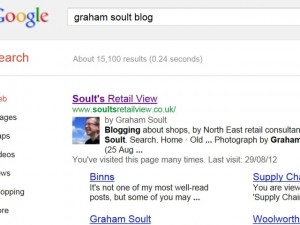





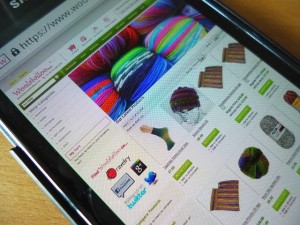
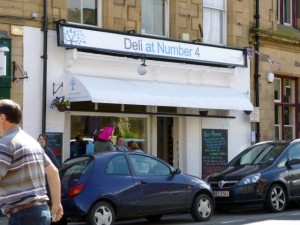
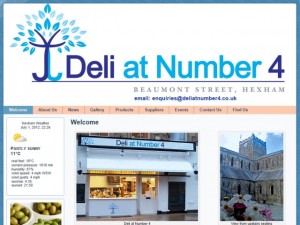
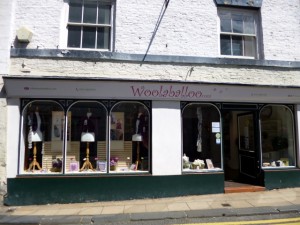


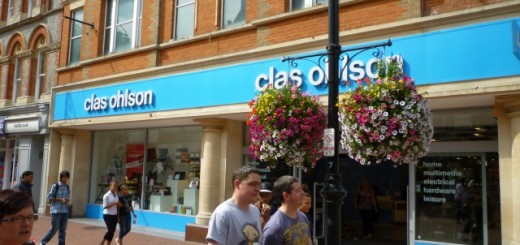



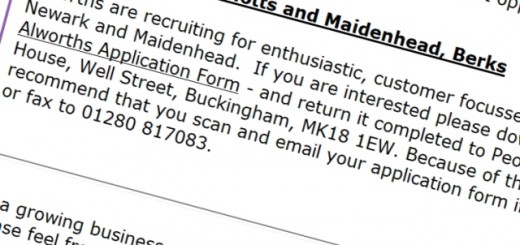

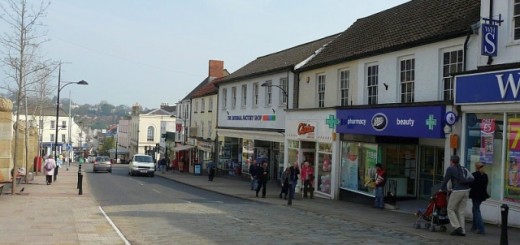
1 Response
[…] [Continue to part two] […]